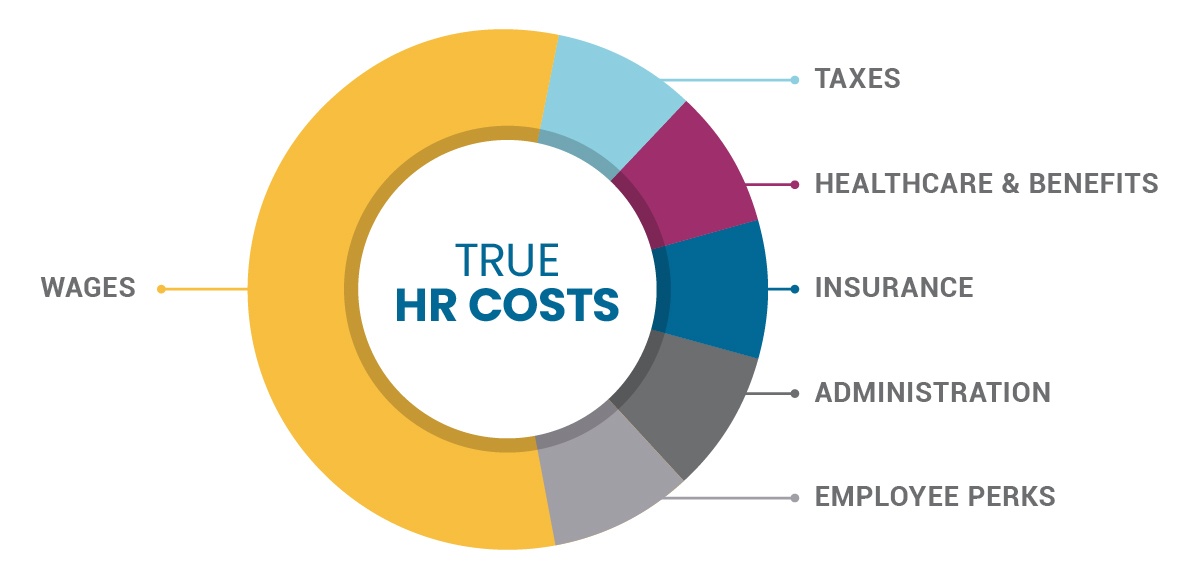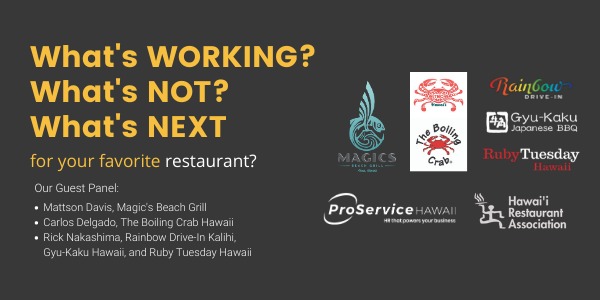The Employer’s Guide to Controlling Labor Costs
Labor expenses, which can be made up of wages, benefits, insurance, taxes, admin, and more, can account for up to 70% of your total business expenses. While many employers think there’s little they can do when managing labor costs, there are actually ways to take control. With our Real Cost Series, we put a magnifying glass on employer labor costs and break down powerful business strategies that can improve your bottom line and help learn how to reduce labor costs without adding to your “to do” list.
When you’re trying to figure out how your labor costs impact your bottom line, it’s important to think beyond payroll. In fact, once you factor in all the additional expenses, it turns out that the true cost of labor can be up to 140% of your employees’ gross wages. That means that if an employee is earning $25 an hour, it’s actually costing you closer to $35 an hour.
It’s called the labor burden, a term that includes an employee’s wages or salary, but also all the non-wage costs of employing a person to work in a business. Beyond employee wages, there’s a long list of benefits, taxes, insurance, and administrative costs that can add up and make controlling labor costs much more challenging. And yet, whether it’s payroll or Workers’ Compensation insurance, employers often assume there’s little they can do to control these costs — but that’s not the case. In fact, managers can use industry-leading tools to increase labor cost efficiency and understand how to avoid exceeding the budget for labor-related expenses. But how can employers control labor costs and manage employee expectations?

By understanding your labor burden, you can get a better handle on where your money is going. And with greater visibility into where the money leads, it’s possible to find the right business strategies that can help you get labor costs under control and keep them stable — without requiring a big investment of your time.
So where is the money going?
Let’s break down some of these labor costs. Beyond an employee’s salary or wages, taxes are an important expense, including state and federal unemployment insurance taxes (SUTA and FUTA), as well as a federal tax (FICA) which pays for social security and Medicare.
Then there’s healthcare and benefits. Health insurance contributions are often a huge labor cost, and many businesses offer a 401(k) contribution or match as an employee benefit as well.
Businesses are also required to pay for certain insurances, including Workers’ Compensation (WC) and Temporary Disability (TDI), which covers medical expenses and a portion of lost wages for employees who become injured or ill. This is especially true here in Hawaii, where the state mandates employers pay for WC and TDI, which is optional in some other states. While these are essential services, they can make controlling labor costs more challenging.
Administrative expenses like payroll processing and benefits administration which are often handled by a third-party or are additional positions on your staff, also add to your total labor cost.
And finally, you are probably paying for some additional employee perks, like cell phone reimbursements, employee uniforms or company apparel, discounted parking, and free in-office coffee and snacks, which all add to how you create a great workplace.
What you can do about it
Understanding labor costs is about more than just satisfying your curiosity. It can give you valuable insight into your business that can actually help you manage your bottom line. When you have a complete picture of your people costs (both wage and non-wage expenses), you're able to more clearly spot trends affecting your business, pinpoint issues, and ask the right questions that are vital for controlling labor costs.
Full visibility into your costs also gives you the opportunity to think about your employment expenses from a strategic business point of view. It also allows you to identify ways that you can actually contain some of those costs. In particular, how you manage your workforce from the back end by making decisions about your business administration. Those decisions might include looking for partnerships that can lock in key insurance rates for more stability, increasing your healthcare buying power by joining forces with a larger group, or partnering with an HR expert to outsource your payroll services and benefits administration tasks so you can spend more time on revenue generating activities instead.
It's possible to think about controlling labor costs more strategically. But finding the right solution starts with really understanding your business and identifying your unique administrative needs.
The payoff
Despite this opportunity, many employers gloss over these issues because they assume that dealing with people costs is an unavoidable time suck and cost of doing business — but it doesn’t have to be that way. By applying smart business strategies, you can reduce your labor cost (while keeping your staff), spend less time dealing with payroll and time-consuming HR admin tasks, and enjoy more time actually managing your employees, serving your customers, marketing, and growing your business.
Accurately predicting labor costs (and, even better, keeping them under control), can reduce your expenses, freeing up resources that you can reinvest to grow your business and support your employees. Deciding to work with an HR partner can give you access to expert training and professional development opportunities that can improve your productivity and labor cost control practices. And by outsourcing HR tasks, business owners can re-claim a work-life balance that many find out of reach.
Learn how ProService Hawaii can help you manage your labor costs, tackle your HR admin, and grow your business. Schedule a free consultation today.









